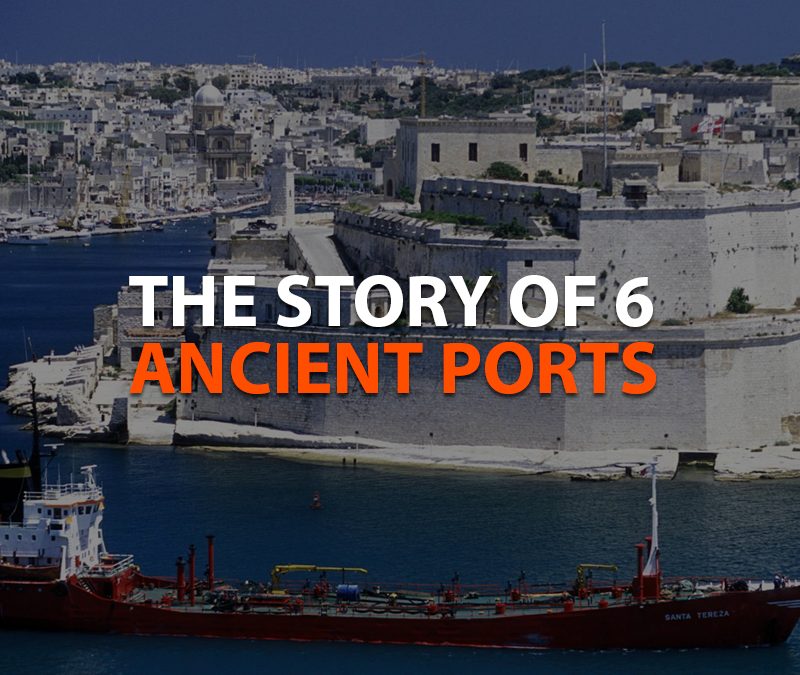The history of civilization is deeply intertwined with the history of trade, and at the heart of trade lie the ports – the bustling hubs that facilitated the exchange of goods, cultures, and ideas. This blog post embarks on a journey through time, exploring some of the most famous ancient ports that were once the lifelines of their civilizations and left indelible marks on human history.
1. Piraeus: The Gateway of Ancient Greece
Piraeus, the port city of Athens, was one of the most important maritime and military hubs of ancient Greece. Founded in the early 5th century BC, it was meticulously planned by the architect Hippodamus of Miletus, making it one of the earliest examples of urban planning. Piraeus was not only crucial for Athens’ sea trade but also served as the home base for its powerful navy. The Long Walls connecting Athens to Piraeus underscored the city’s importance, ensuring a continuous supply line during sieges.
2. Ostia: The Lifeline of Rome
Ostia, situated at the mouth of the River Tiber, served as the bustling seaport of ancient Rome. Founded in the 4th century BC, it was Rome’s primary naval base and a vital commercial hub that facilitated the flow of goods, slaves, and grains into the heart of the empire. As Rome expanded, Ostia became a cosmopolitan center, reflected in its diverse architectural remnants, including temples, baths, and warehouses. Despite its decline in the late Roman Empire, Ostia offers invaluable insights into ancient Roman life and commerce.
Illustration by Georg Braun and Frans Hogenber, 1588
3. Carthage: The Maritime Powerhouse of the Mediterranean
The city of Carthage, located in present-day Tunisia, was founded by the Phoenicians in the 9th century BC. It grew to become a dominant maritime power and one of the most affluent cities of the ancient world. Carthage was renowned for its impressive harbor, the Cothon, which included a merchant and military port. Despite its eventual destruction by Rome in the Third Punic War (146 BC), Carthage’s legacy as a center of trade and naval innovation endures.
Carthage port digital reconstruction
4. Alexandria: The Crossroads of Culture
Founded by Alexander the Great in 331 BC, Alexandria was designed to be a link between Greece and the rich Nile Valley. Situated on the Mediterranean coast of Egypt, it became the most significant cultural, political, and economic metropolis of the ancient world. The city was famous for its Pharos, one of the Seven Wonders of the Ancient World, which guided ships into its bustling harbor. Alexandria was a melting pot of cultures and the seat of learning and scholarship in the ancient world.
5. Lothal: The Harappan Maritime Marvel
Lothal, one of the southernmost cities of the Indus Valley Civilization (present-day India), was an important trade center around 2400 BC. Known for its unique dockyard, Lothal facilitated maritime trade with Mesopotamia, Egypt, and Persia. The city’s well-planned layout, with its central marketplace, warehouses, and residential areas, reflects a sophisticated understanding of urban planning and maritime logistics.
It is said to be the oldest port known in history.
6. Tyre: The Phoenician Trading Empire
Tyre, situated in present-day Lebanon, was originally an island city before becoming a peninsula. Renowned for its production of a rare and expensive purple dye, Tyre was the heart of the vast Phoenician trade networks that spanned the Mediterranean. Its highly skilled sailors and navigators ventured as far as the British Isles and the west coast of Africa. The prosperity and influence of Tyre were so great that it is frequently mentioned in ancient texts, including the Bible.
Source: short-history.com
These ports were instrumental in shaping the course of history, laying the groundwork for the modern world. As we delve into their stories, we are reminded of the timeless importance of maritime trade and the interconnectedness of human societies.






